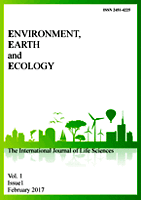| 1. |
IUCN (2018) Assessing IUCN Contribution to Uganda’s Forest Landscape Restoration Processes. Kampala, Uganda.
|
| 2. |
Kaboggoza J (2011) Forest Plantations and Woodlots in Uganda. Vol. 1. Nairobi. www.afforum.org%0A1%0ADisclaimer.
|
| 3. |
Kakuru OV, Doreen M, Wilson M (2014) Adoption of On-Farm Tree Planting in Kibaale District, Western Uganda. Journal of Sustainable Forestry 33 (1): 87–98. https://doi.org/10.1080/105498....
|
| 4. |
Kalanzi F, Nansereko S (2014) Exploration of Farmers Tree Species Selection for Coffee Agroforestry in Bukomansimbi District of Uganda. International Journal of Research on Land-Use Sustainability 1: 9–16.
|
| 5. |
Langdale BL, Osmaston HA, Wilson JG (1964) The Vegetation of Uganda and Its Bearing on Land Use. Kampala.
|
| 6. |
Londo AJ, Kushla JD, Carter RC (2006) Soil PH and Tree Species Suitability in the South. Southern Regional Extension Forestry.
|
| 7. |
Ministry of Water and Environment (2016) State of of Uganda’s Forestry 2016. Kampala. www.mwe.go.ug.
|
| 8. |
Nabanoga G, Namaalwa J, Ssenyonjo (2012)The Ongo Community Forest REDD + Pilot Project, Uganda A Socioeconomic Baseline Survey. London.
|
| 9. |
National Environmental Management Authority (2009) Fourth National Report To The Convention On Biological Diversity. Kampala, Uganda.
|
| 10. |
National Planning Authority (2013) Uganda Vision 2040. Kampala, Uganda. http://npa.ug/uganda-vision-20....
|
| 11. |
Nyakana F, Nyakana G (nd) Kibaale District Hydrochemical Characteristics Map.
|
| 12. |
Salmond JA, Tadaki M, Vardoulakis S, Arbuthnott K, Coutts A, Demuzere M, Dirks KN, et al. (2016) Health and Climate Related Ecosystem Services Provided by Street Trees in the Urban Environment. Environmental Health 15 (36): 95–111. https://doi.org/10.1017/S17552....
|
| 13. |
Uganda Bureau of Statistics (2016) National Population and Housing Census 2014 - Main Report. Uganda Bureau of Statistics. Kampala, Uganda. https://doi.org/10.1017/CBO978....
|
| 14. |
Ward C, Stringer LC, Holmes G (2018) Protected Area Co-Management and Perceived Livelihood Impacts. Journal of Environmental Management 228: 1–12. https://doi.org/10.1016/j.jenv....
|
| 15. |
Wieland M (2012) Murchison ‐ Semliki REDD + Project Free , Prior and Informed Consent Approach.” Kampala, Uganda.
|
| 16. |
World Vision Uganda (2014) 2014 Annual Report. Kampala, Uganda.
|
| 17. |
Yelenik SG (2017) Linking Dominant Hawaiian Tree Species to Understory Development in Recovering Pastures via Impacts on Soils and Litter. Restoration Ecology 25 (1): 42–52. https://doi.org/10.1111/rec.12....
|








